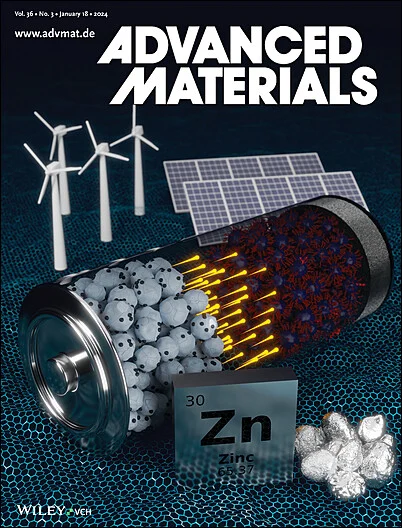Graph Neural Network Driven Exploration of Non‐Precious Metal Catalysts for Air‐to‐Ammonia Conversion
IF 26.8
1区 材料科学
Q1 CHEMISTRY, MULTIDISCIPLINARY
引用次数: 0
Abstract
Efficient ammonia production directly from the air with minimal energy consumption remains one of the most challenging and ambitious scientific goals. NH图神经网络驱动的非贵金属空气制氨催化剂的探索
以最小的能源消耗直接从空气中高效生产氨仍然是最具挑战性和雄心勃勃的科学目标之一。NH2OH已被证明是一种有前途的稳定的生产NH3的中间体,通过将连续流等离子体反应器与电解槽耦合,可以从空气中直接生成NH3。然而,贵金属掺杂Cu合金作为阴极催化剂的要求限制了耦合等离子体电化学系统的可扩展性和成本效益。在这项工作中,图神经网络、密度泛函理论计算和微动力学建模相结合,详尽地探索了所有实验可获得的合金相对NH3生产的催化性能,最终确定了非贵金属CuMnSb系统对空气转化为NH3具有高活性。实验证实,在等离子体-电解槽耦合系统中,氨的产率为28.47 mg h−1 cm−2。这一发现证实了机器学习和微动力学理论在指导超越传统方法限制的实验探索方面的未来。
本文章由计算机程序翻译,如有差异,请以英文原文为准。
求助全文
约1分钟内获得全文
求助全文
来源期刊

Advanced Materials
工程技术-材料科学:综合
CiteScore
43.00
自引率
4.10%
发文量
2182
审稿时长
2 months
期刊介绍:
Advanced Materials, one of the world's most prestigious journals and the foundation of the Advanced portfolio, is the home of choice for best-in-class materials science for more than 30 years. Following this fast-growing and interdisciplinary field, we are considering and publishing the most important discoveries on any and all materials from materials scientists, chemists, physicists, engineers as well as health and life scientists and bringing you the latest results and trends in modern materials-related research every week.
 求助内容:
求助内容: 应助结果提醒方式:
应助结果提醒方式:


